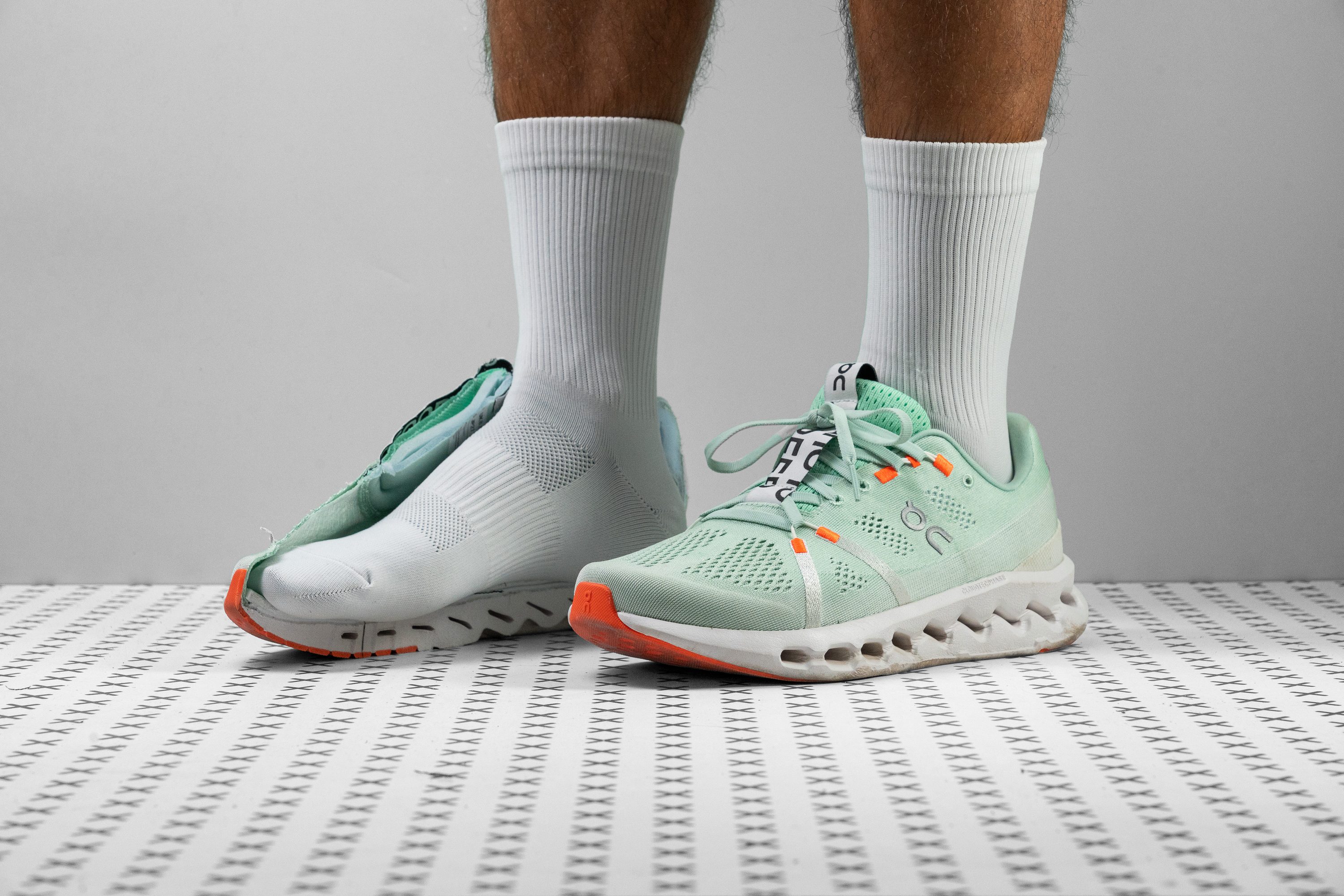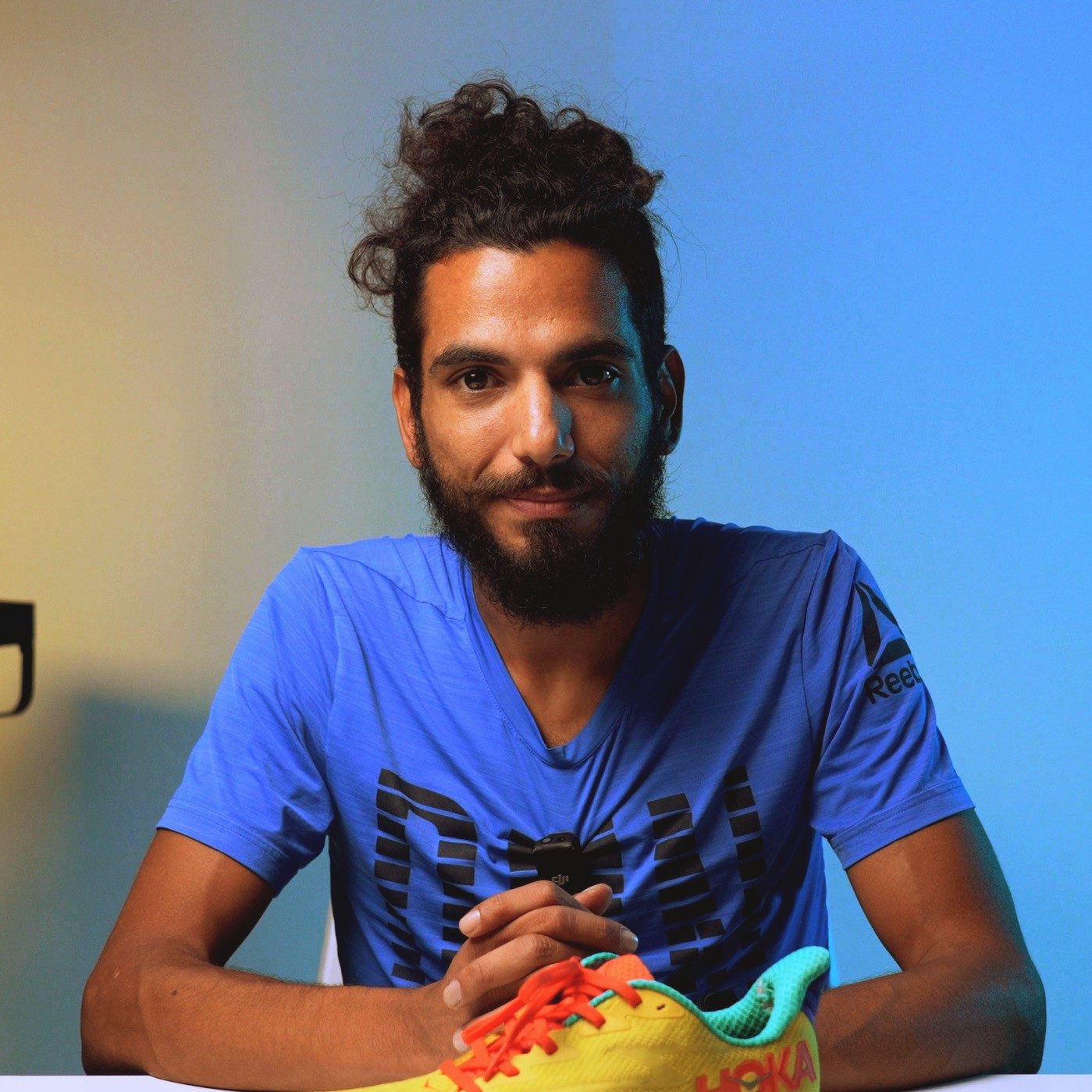Our verdict
- Top pick in best On running shoes (2023)
- Top pick in best On road running shoes (2023)
Pros
- Soft and squishy midsole
- Smooth and fun ride
- Rockered design promotes buttery transitions
- Great for short and mid-distance runs
- No speedboard means it’s no longer stiff
- Super comfy upper
- Snug and secure lockdown
- Plush tongue prevents even a hint of lace bite
- Lightweight for such a well padded shoe
- Stylish and sustainability minded design
Cons
- Overall issues with durability
- Somewhat unstable at longer distances
- Not ideal for heavy forefoot strikers
- Pricey for a daily trainer
Audience verdict
Comparison
The most similar running shoes compared
+ + Add a shoe | |||||
|---|---|---|---|---|---|
| Audience score | 86 Good! | 90 Superb! | 90 Superb! | 90 Superb! | |
| Price | $160 | $180 | $160 | $180 | |
| Pace | Daily running | Daily running | Daily runningTempo | Daily running | |
| Shock absorption | High | High | Moderate | Moderate | |
| Energy return | Moderate | Moderate | Moderate | Moderate | |
| Traction | Moderate | High | Moderate | High | |
| Arch support | Neutral | Neutral | Neutral | Neutral | |
| Weight lab Weight brand | 8.4 oz / 237g 8.6 oz / 245g | 9.6 oz / 272g 9.7 oz / 275g | 8.6 oz / 245g 9.2 oz / 260g | 10.4 oz / 296g 10.3 oz / 292g | |
| Lightweight | ✓ | ✗ | ✓ | ✗ | |
| Drop lab Drop brand | 14.6 mm 10.0 mm | 9.4 mm 6.0 mm | 7.9 mm 8.0 mm | 9.1 mm 6.0 mm | |
| Strike pattern | Heel | HeelMid/forefoot | Mid/forefoot | HeelMid/forefoot | |
| Size | Slightly small | True to size | True to size | True to size | |
| Midsole softness | Balanced | Balanced | Balanced | Balanced | |
| Difference in midsole softness in cold | Big | Small | Small | Normal | |
| Toebox durability | Bad | Decent | Decent | Decent | |
| Heel padding durability | Bad | Bad | Decent | Good | |
| Outsole durability | Good | Good | Good | Good | |
| Breathability | Moderate | Moderate | Moderate | Moderate | |
| Width / fit | Medium | Medium | Medium | Wide | |
| Toebox width | Medium | Medium | Medium | Medium | |
| Stiffness | Flexible | Stiff | Moderate | Stiff | |
| Torsional rigidity | Flexible | Stiff | Stiff | Stiff | |
| Heel counter stiffness | Flexible | Moderate | Flexible | Flexible | |
| Rocker | ✗ | ✓ | ✗ | ✗ | |
| Heel lab Heel brand | 36.3 mm 32.0 mm | 39.9 mm 37.0 mm | 36.1 mm 31.0 mm | 35.3 mm 37.0 mm | |
| Forefoot lab Forefoot brand | 21.7 mm 22.0 mm | 30.5 mm 31.0 mm | 28.2 mm 23.0 mm | 26.2 mm 31.0 mm | |
| Widths available | Normal | Normal | Normal | Normal | |
| Orthotic friendly | ✓ | ✓ | ✓ | ✓ | |
| Season | All seasons | All seasons | All seasons | All seasons | |
| Removable insole | ✓ | ✓ | ✓ | ✓ | |
| Ranking | #377 Bottom 43% | #40 Top 11% | #64 Top 18% | #70 Top 19% | |
| Popularity | #570 Bottom 14% | #203 Bottom 45% | #123 Top 33% | #172 Top 46% |
Who should buy
We recommend the Cloudsurfer 7 as an excellent training partner for runners who:
- Want to spoil themselves with a shoe that brings fun and bounciness to daily runs or walks.
- Prefer a flexible shoe that’s speedy without relying on the stiff speedboard found in other On running shoes.
- Prioritize comfort over all other factors in their daily-trainers.
- Live in colder climates where the shoe’s plush padding will be better appreciated.
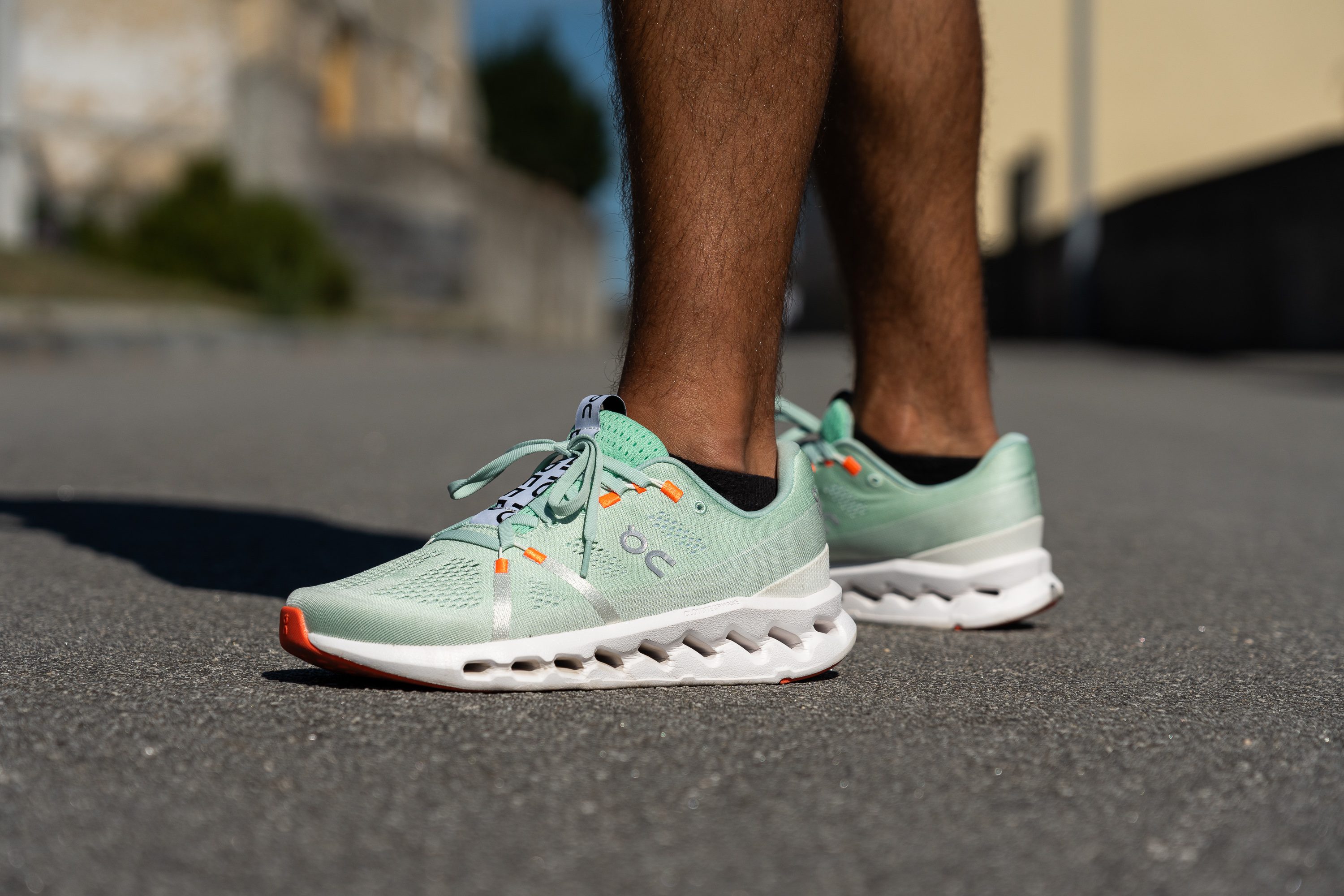
Who should NOT buy
While great for short or mid-distance runs, the Cloudsurfer 7 proves more of a hindrance during longer efforts. As fatigue becomes more pronounced towards the latter mile-markers, the bounciness of the midsole starts to feel unpredictable which takes its toll on our already waning energy levels. For a daily trainer that’s also an efficient mile-gobbler, we recommend the ASICS Novablast 3 instead.
The luxurious Cloudsurfer 7 does unfortunately come at a luxury price, especially for a non-performance shoe made with easier runs in mind. For runners looking for a daily trainer that’s soft underfoot without being hard on the wallet, we suggest looking at the Saucony Axon 2.
The Cloudsurfer 7 offers little to no added stability for runners with a pronating stride. For those runners we suggest the ASICS GT 2000 11 or the cheaper Brooks Launch GTS 10 which boast proper corrective features that serve to prevent running injuries.

Cushioning
Shock absorption
The distinct design of the Cloudsurfer 7's midsole led to one of the most unusual results we’ve recorded in the lab. While heel cushioning is outstanding at 139 SA, the forefoot drops sharply to just 84 SA.
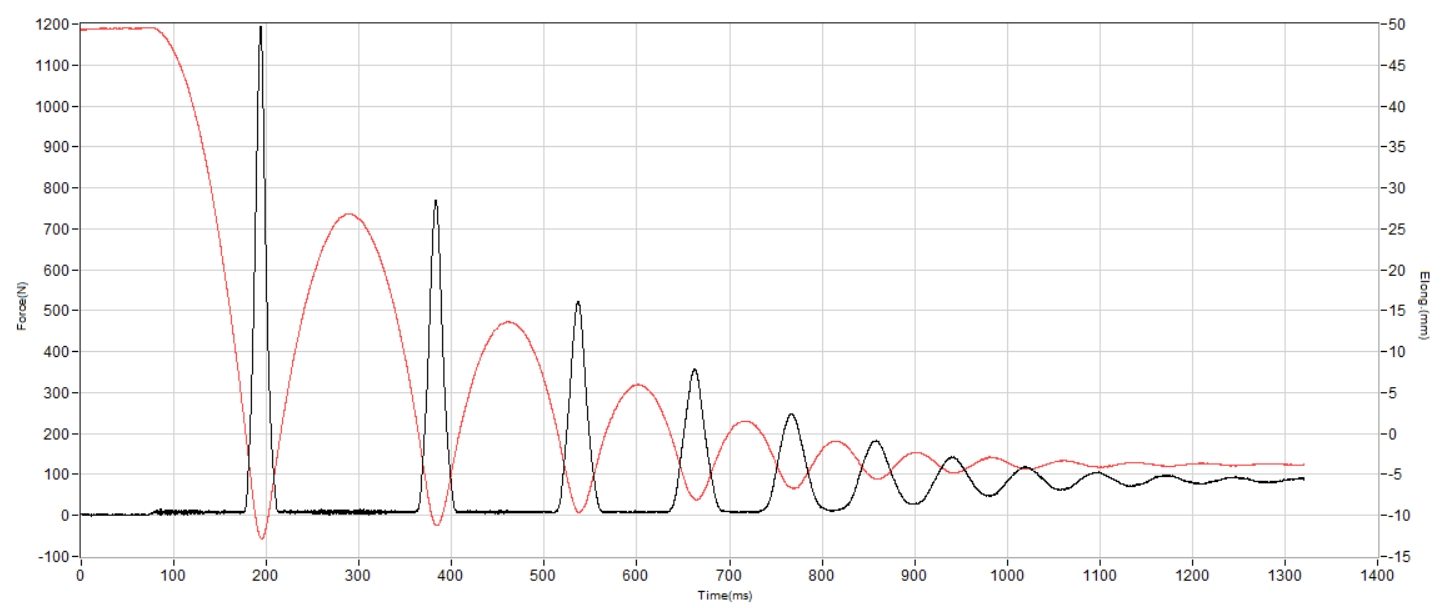
| Cloudsurfer 7 | 139 SA |
| Average | 129 SA |
Energy return
Energy return is solid, though not impressive. Still, with 56.3% in the heel and 60.8% in the forefoot, we think the Cloudsurfer 7 performs well enough for daily runs and some random quick bursts.
| Cloudsurfer 7 | 56.3% |
| Average | 58.5% |
Heel stack
We found a significant discrepancy with the heel stack measurement provided by On. While the Cloudsurfer 7 is stated to have a 32 mm rearfoot stack, we measured it with our caliper to be quite a bit thicker at 36.3 mm, This makes the Cloudsurfer 7’s midsole more robust at the heel than our lab average, giving us plenty of soft foam to luxuriate in during our test runs.
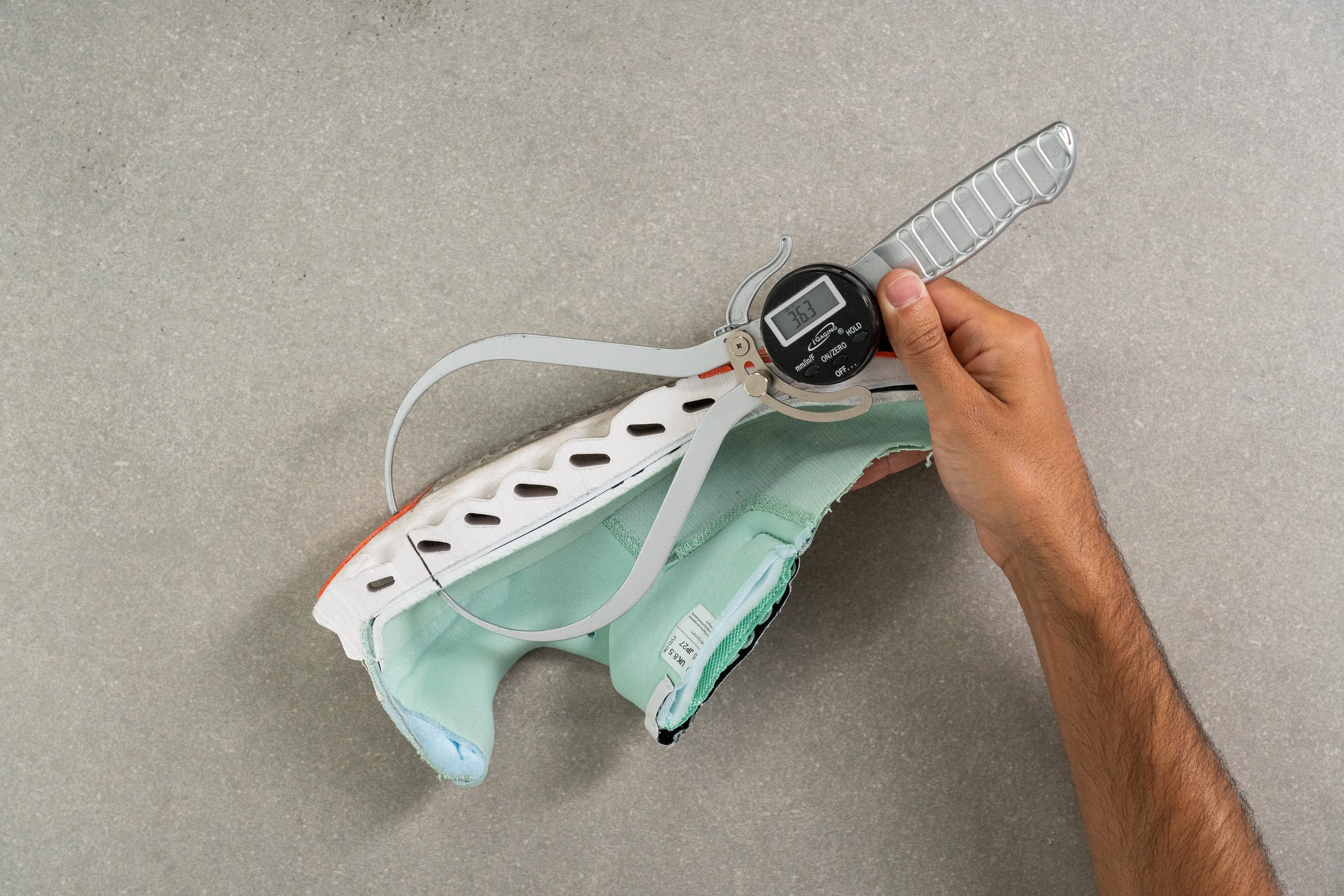
| Cloudsurfer 7 | 36.3 mm |
| Average | 34.8 mm |
Forefoot stack
We measured the midsole to be 21.6 mm thick at the forefoot, making the 22 mm forefoot stack stated by On pretty accurate. While this makes the Cloudsurfer 7 a little shorter than the current lab average at the forefoot, we still had lots of cushy foam underfoot for soft midfoot landings and lively toe-offs.
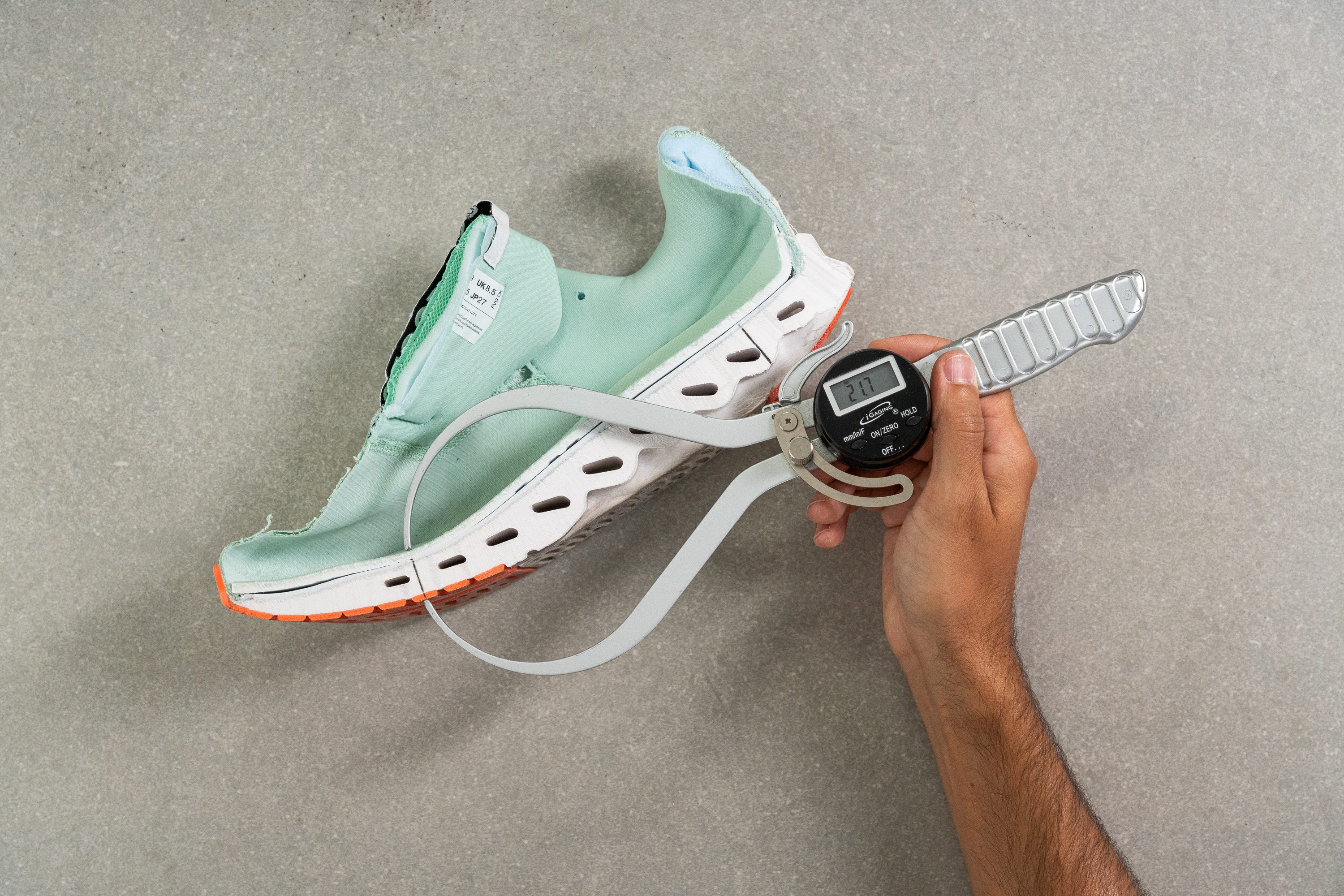
| Cloudsurfer 7 | 21.7 mm |
| Average | 26.2 mm |
Drop
The difference in our accurate stack measurements leaves the Cloudsurfer 7 with a drop height of 14.6 mm, notably steeper than the 10 mm claimed by On. This still classifies the shoe as a high-drop shoe

While we find that high stacked shoes tend to favor runners with a heel striking stride; the Cloudsurfer 7’s rocker geometry, which rivals that of a child’s rocking horse, promotes buttery smooth heel-to-toe transitions that even forefoot strikers can appreciate.
For runners who prefer shoes with a less dramatic heel drop, we recommend the mid-drop On Cloudmonster, or the low-drop Saucony Kinvara 14 which still sports a healthy stack height.
| Cloudsurfer 7 | 14.6 mm |
| Average | 8.6 mm |
Midsole softness
With a durometer reading of 20.4 HA, the Cloudsurfer 7’s midsole foam is undoubtedly plush. Despite this softer than average reading, the Cloudsurfer 7 never bottomed out or felt overly gummy on our test runs. Instead the shoe puts a cheerful skip in our step as we walk to our running location, with a noticeable shift in gears to reactive and bouncy as we push the pace. The result is a cushy yet propulsive ride that had us breezing through our test runs.

Further exaggerating the perceived cushioning underfoot is the Cloudsurfer 7’s reconfigured midsole design. Gone are the iconic individual clouds that we’ve come to expect from On shoes, replaced instead with a row of voids running along the midsole. The diagonal orientation of these voids allows the midsole to compress beyond the limitation of the foam, only to quickly snap back when weight is shifted off the shoe.
| Cloudsurfer 7 | 20.4 HA |
| Average | 20.4 HA |
Size and fit
Size
On Cloudsurfer 7 fits slightly small (88 votes).
Toebox width - widest part
We measured the toebox at its widest point to be 98.9 mm which is exactly the same as our current lab average.
But the stretchy nature of its mesh upper makes the Cloudsurfer 7 feel a bit more accommodating than most shoes.
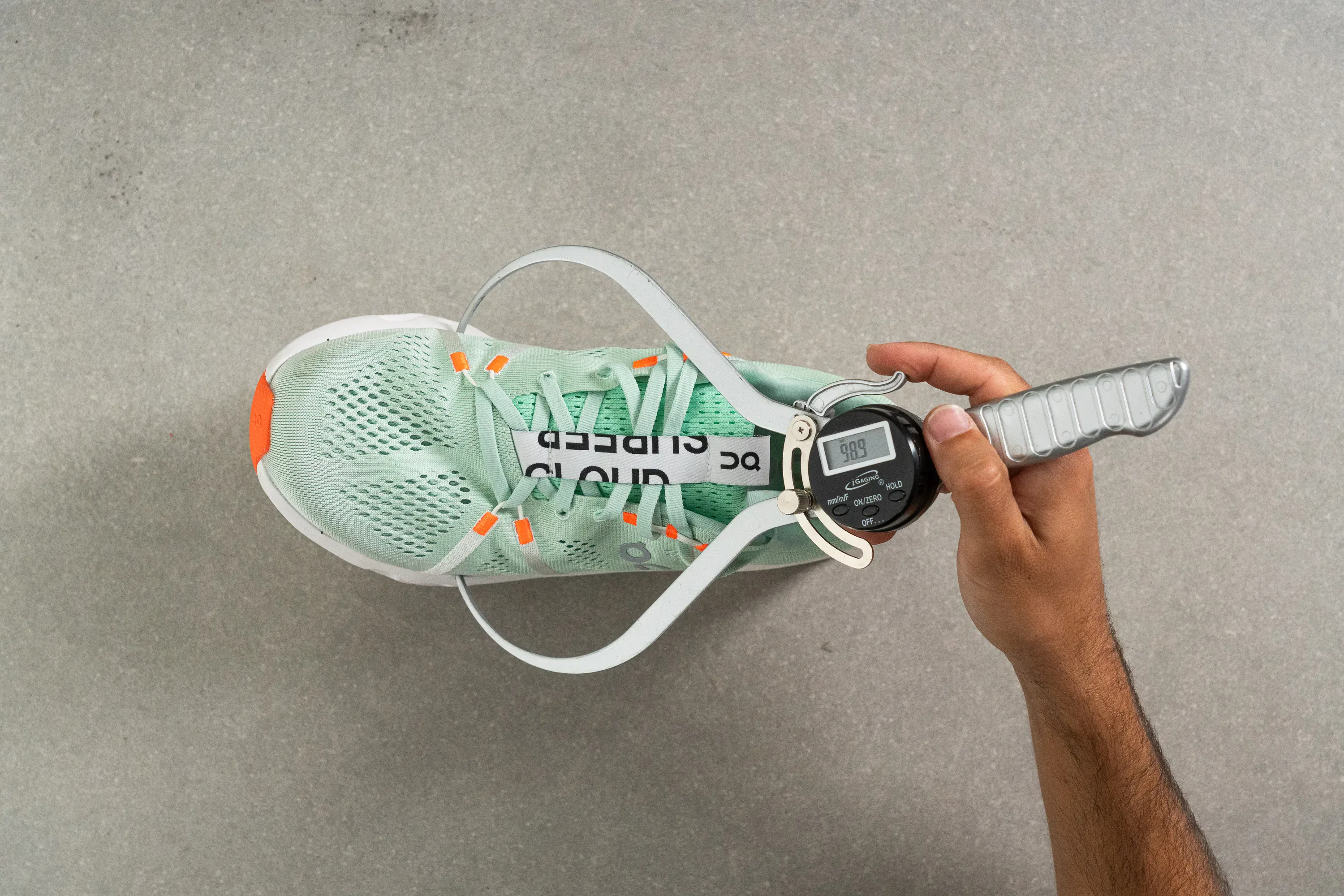
This test follows an older methodology, which is why you don't see recently tested shoes in the chart. Results from different methodologies can not be compared.
| Cloudsurfer 7 | 98.9 mm |
| Average | 98.5 mm |
Toebox width - big toe
Further adding to the shoe’s accommodating nature, the toebox doesn’t taper as dramatically as the average shoe we’ve tested in the lab so far, measuring 78.6 mm wide at the big toe. This gives the Cloudsurfer 7 a more natural, foot-shaped silhouette which gives us more than enough room to splay out as we land.

This test follows an older methodology, which is why you don't see recently tested shoes in the chart. Results from different methodologies can not be compared.
| Cloudsurfer 7 | 78.6 mm |
| Average | 78.4 mm |
Traction / Grip
Traction test
We tested the outsole and found a 0.43 result in our wet-grip setup. That score delivers a confident-enough ride on damp terrain, even if there’s still some margin for refinement in slippery conditions. On dry pavement, however, the shoe feels definitely more stable.
| Cloudsurfer 7 | 0.43 |
| Average | 0.48 |
Outsole design
The Cloudsurfer 7 features partial rubber coverage concentrated on high-wear zones in the heel and forefoot. The rest of the outsole reveals a reinforced EVA surface with diamond-shaped grooves. A narrow central channel runs from the heel and forks in the midfoot, helping the shoe stay lightweight and adaptable underfoot.
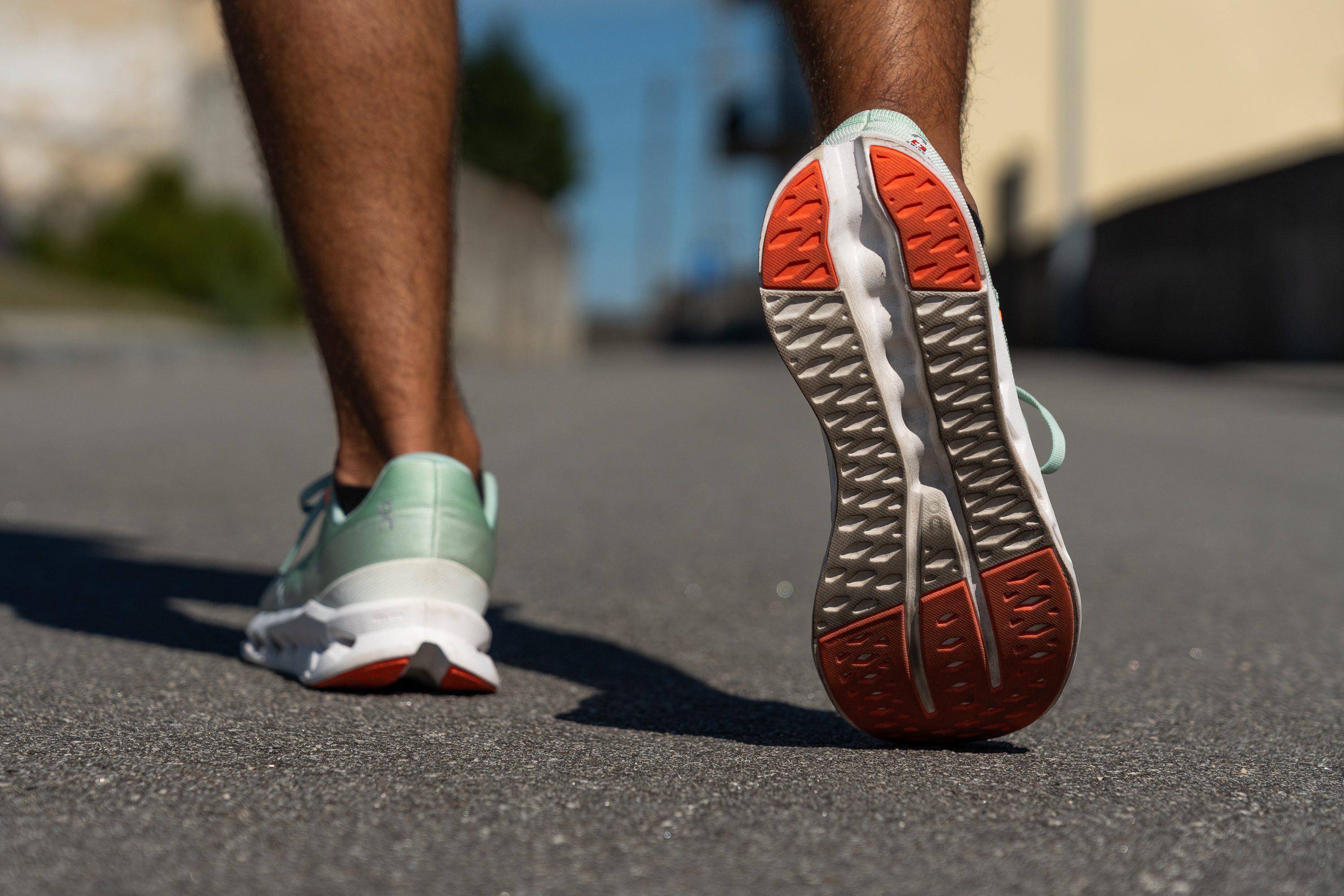
Flexibility / Stiffness
We secured the Cloudsurfer 7 to our workbench and measured the amount of force required to bend the shoe 30-degrees in order to test the flexibility of the shoe. With a reading of 6.6N, the Cloudsurfer 7 is among the most flexible shoes we’ve come across in the lab!

| Cloudsurfer 7 | 6.6N |
| Average | 15.3N |
Stiffness in cold (%)
We also re-tested the shoe’s flexibility after leaving it in the freezer for twenty minutes. With a reading of 20.4N of force required to perform the same test, the Cloudsurfer 7 remains incredibly flexible even when exposed to frigid conditions.
This fact in combination with the relatively well insulated upper and the consistently soft midsole means that we highly recommend the Cloudsurfer 7 to those who live in colder climates.
Stiffening up by 62.8%, the Cloudsurfer 7 can be described as less consistent than the average shoe between warm and cold conditions; but as with most things in life, context is king.
A reading of 20.4N makes the Cloudsurfer 7 significantly more flexible than the average shoe at room temperature, let alone under the same conditions!
| Cloudsurfer 7 | 63% |
| Average | 33% |
Weight
For such a well padded maximalist shoe, the Cloudsurfer 7 is deceptively lightweight. At 8.35 Oz (237g) the Cloudsurfer 7 is lighter than our lab average and feels easy and unobtrusive on the feet.
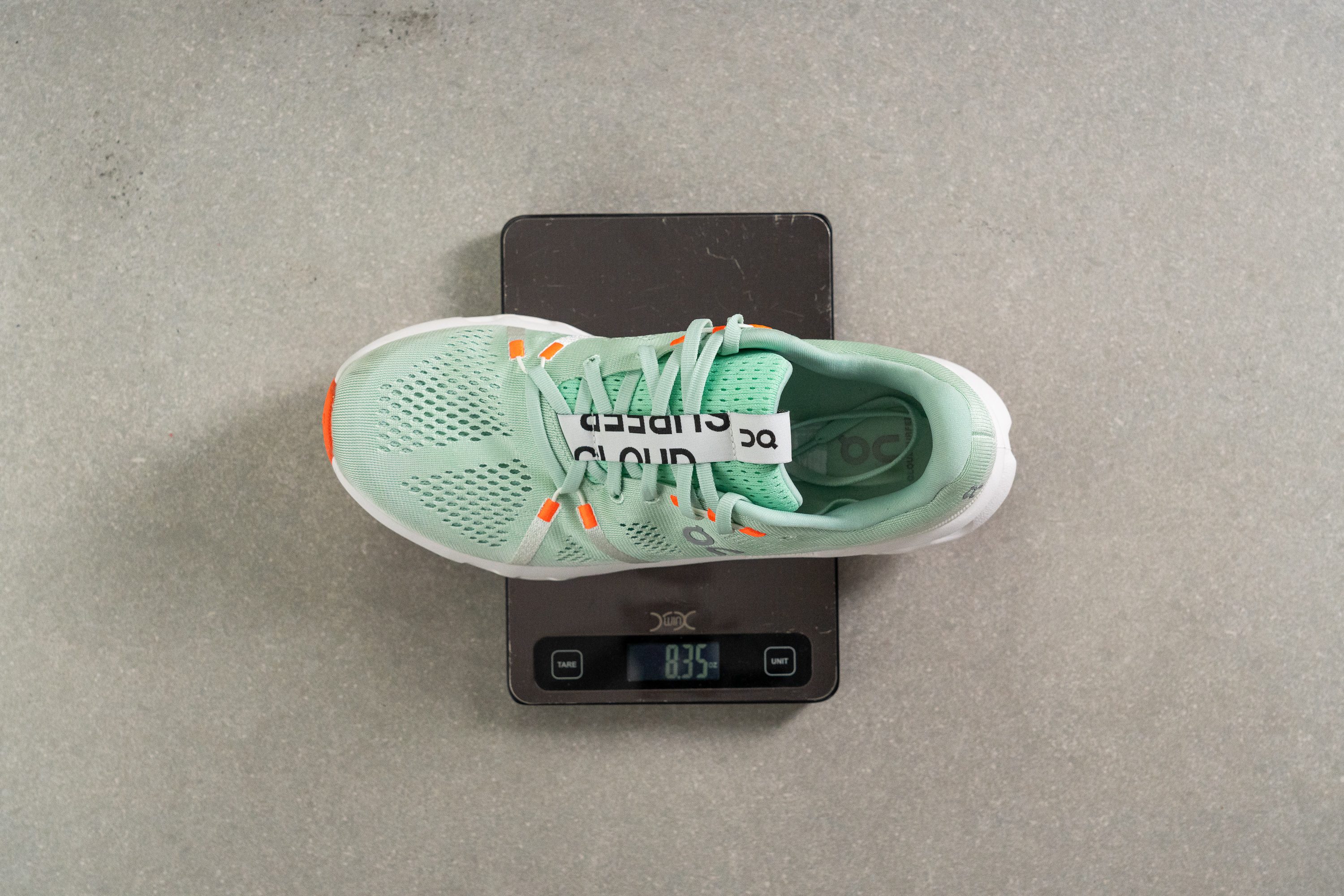
| Cloudsurfer 7 | 8.4 oz (237g) |
| Average | 9.3 oz (264g) |
Breathability
Shining a light through a cross-section of the upper, one might be led to believe that the Cloudsurfer 7 is a breathable shoe. A fair amount of light seems to peak through the larger pores that dot the shoe’s sides and toebox.
Our smoke test, however, tells a different story altogether. As we can clearly see from the video, only wisps of smoke are able to escape through the porous parts of the shoe, with almost nothing penetrating the shoe’s plump tongue. This leads us to give the shoe a score of 3 out of 5 for breathability as the shoe does trap in a fair amount of heat despite being somewhat ventilated.

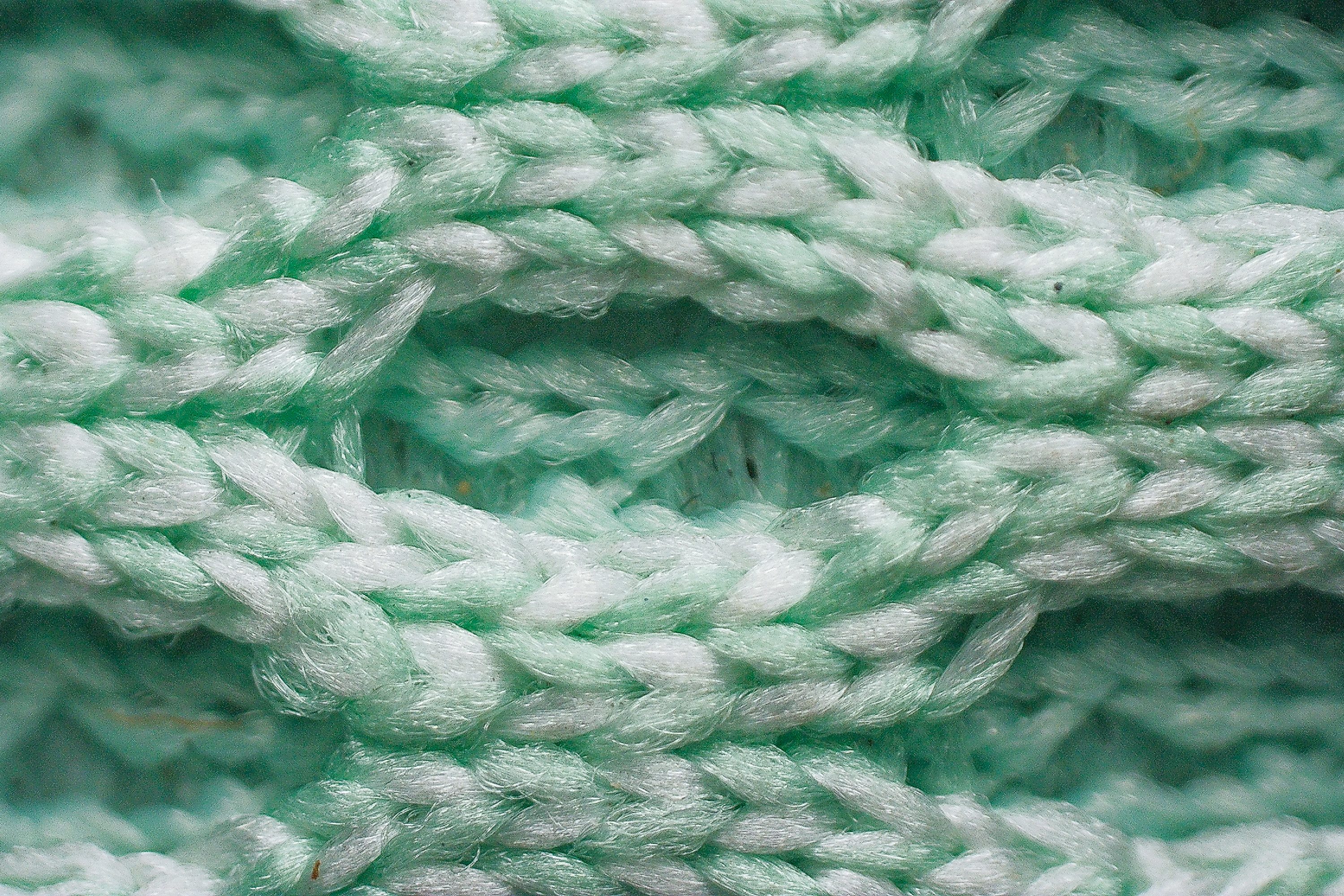
This result is actually better than we expected from such a remarkably padded shoe. Looking at a section of the Cloudsurfer 7’s upper under our microscope, we can see that the mesh is made up of layers and layers of chunky, tightly braided fibers with very small gaps for heats to flow through. As a result the shoe will definitely feel toasty, especially in hot climates or during summer runs.
| Cloudsurfer 7 | 3 |
| Average | 3.7 |
Stability
Lateral stability test
While the shoe wasn’t excessively tippy when we shifted our weight from side to side, the Cloudsurfer 7’s tall stack and squishy midsole definitely makes it feel a tad unstable underfoot.
Torsional rigidity
As a well padded, maximalist shoe, the Cloudsurfer 7 really surprised us with how little resistance it offered up when we torqued and twisted it in our hands. We therefore give it a score of 1 out of 5 for torsional rigidity, meaning that the shoe very easily adapts to the natural contortions of the foot as we run.
While this gives the shoe an easygoing and natural underfoot sensation, it also makes the Cloudsurfer 7 a less than ideal choice for pronating runners who require stability features that prevent the inward rolling of the foot. For those runners we highly recommend the On Cloudrunner or the ASICS GT 200 11 as more supportive alternatives.
| Cloudsurfer 7 | 1 |
| Average | 3.5 |
Heel counter stiffness
The Cloudsurfer 7’s heel counter is similarly malleable, easily bending and folding as we squeezed and manipulated it in our hand, thus getting a score of 1 out of 5 on our subjective scale.
This in conjunction with the ample padding allowed us to achieve a secure fit around the heel without the shoe putting too much pressure on the Achilles.
| Cloudsurfer 7 | 2 |
| Average | 2.9 |
Midsole width - forefoot
Using our caliper, we measured the Cloudsurfer 7’s midsole to be 114.9 mm wide at the forefoot. This makes it slightly wider than average and serves to somewhat offset the instability of the shoe’s high stack.
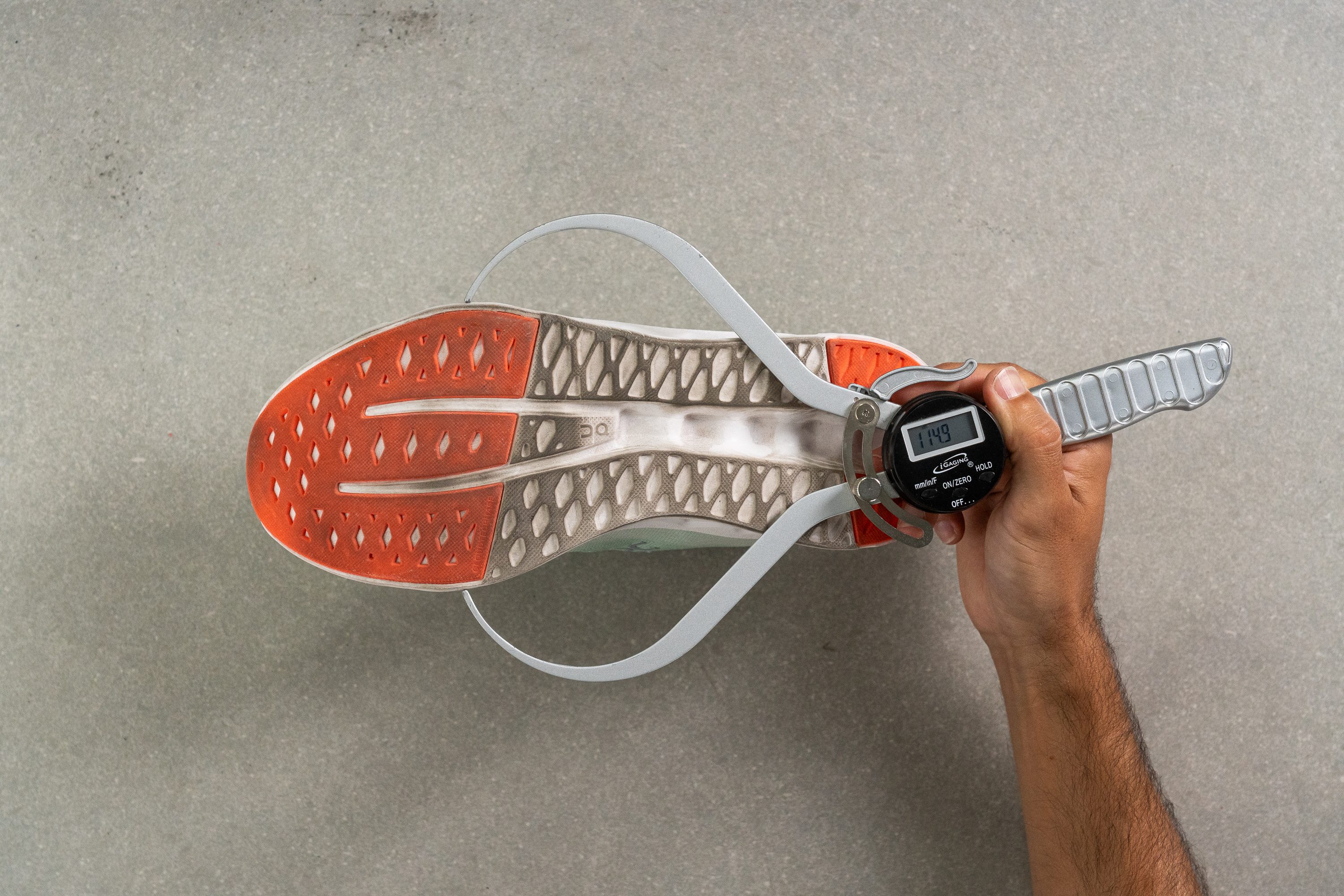
| Cloudsurfer 7 | 114.9 mm |
| Average | 114.4 mm |
Midsole width - heel
At 88.3 mm according to our caliper, the Cloudsurfer 7’s midsole is slightly narrower than our current lab average. Despite this we still had more than enough platform to ensure stable landings when heel-striking.
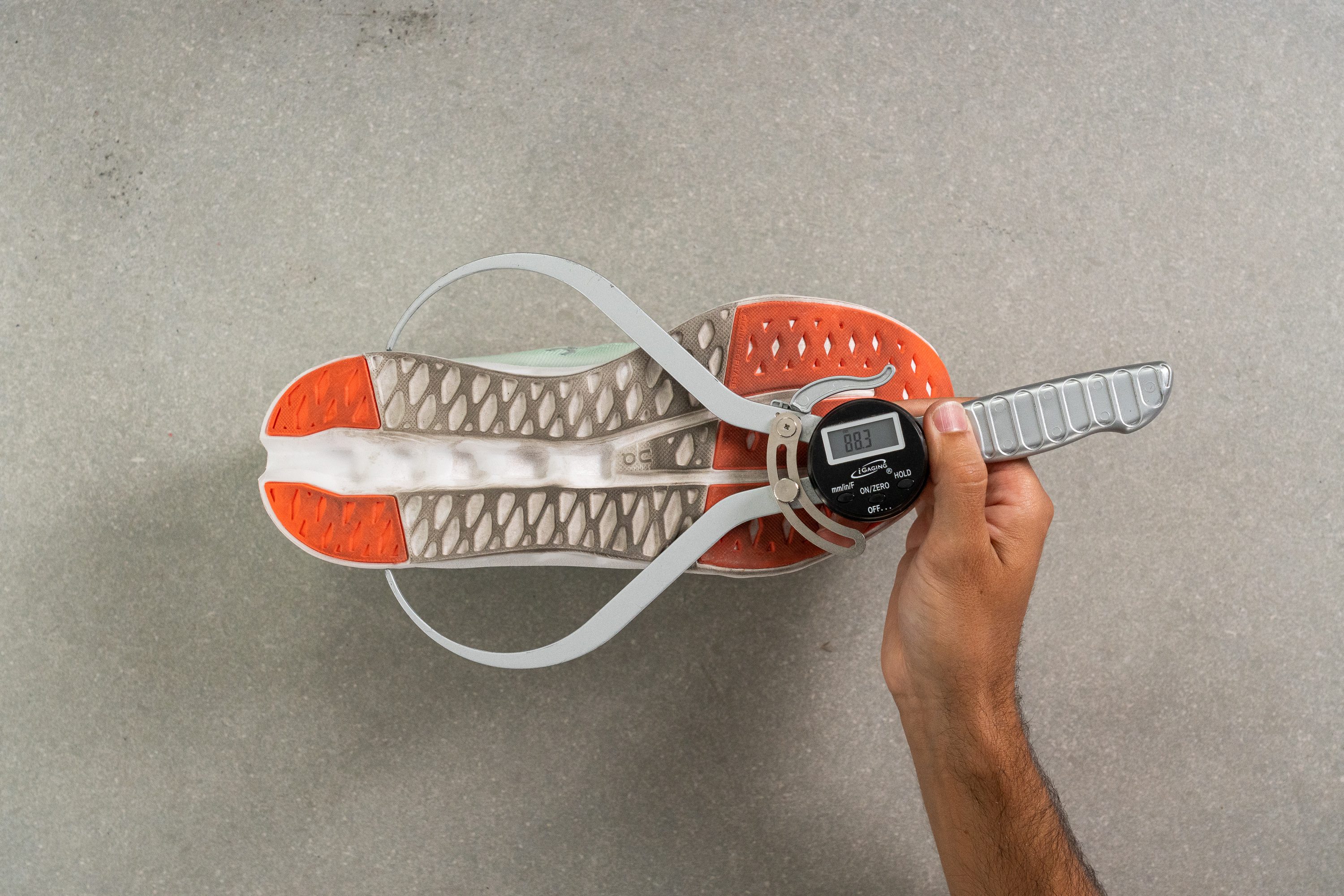
| Cloudsurfer 7 | 88.3 mm |
| Average | 90.7 mm |
Durability
Toebox durability
We pressed our dremel to the Cloudsurfer 7’s toebox with a force of 3.2N at 10K RPM to test its durability. The tool quickly grinded its way through the upper material, leaving a rather large hole in the aftermath of the four second test. This leads us to give the shoe a score of 1 out of 5 for toebox durability, though a great bulk of the shoes we tested so far have suffered a similar fate.
We therefore recommend avoiding any off-roading in the Cloudsurfer 7 as one unlucky snag on its upper could spell the early end of a rather expensive shoe

For a road shoe that boasts a sturdier toebox, check out the On Cloudswift 3 which held up much better against our dremel.
| Cloudsurfer 7 | 1 |
| Average | 2.6 |
Heel padding durability
The shoe’s heel collar fared just as badly against our merciless dremel. Applying it with the same amount of force almost immediately sent wisps of cotton-like padding flying through the air, with almost nothing left after four seconds were up. As a result we give the Cloudsurfer 7 a score of 1 out of 5 for heel padding durability.
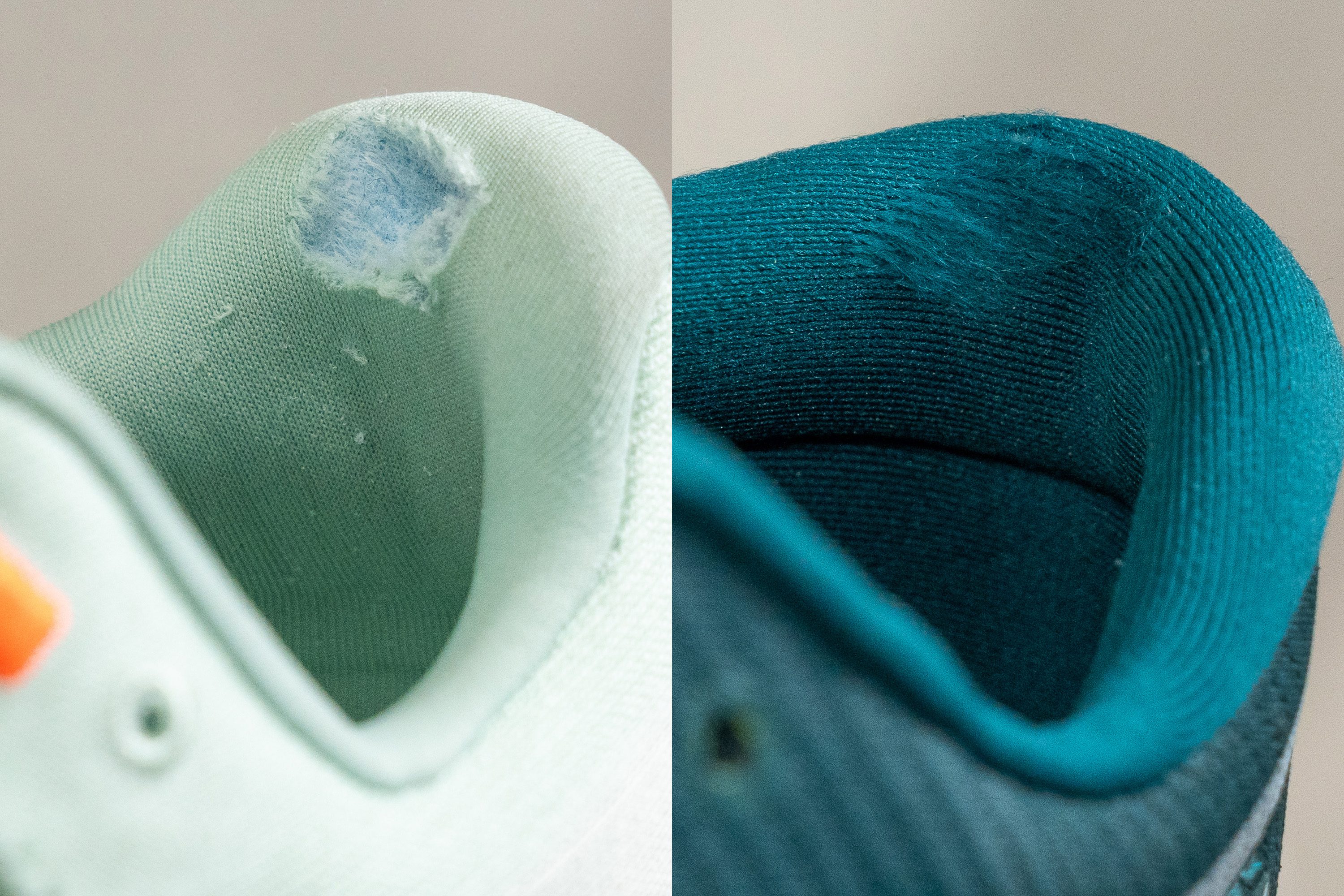
So while it may be tempting to go sockless in these rather warm runners, we wouldn’t recommend it as the friction caused by constant, sweaty heel rubs will most certainly wear down the plump heel collar.
| Cloudsurfer 7 | 1 |
| Average | 3.4 |
Outsole hardness
To measure how hard the Cloudsurfer 7’s outsole rubber is, we pressed our durometer against it and got a reading of 83.3 HC. This is ever-so slightly higher than the average of road shoes we’ve tested so far; and makes the Cloudsurfer 7’s outsole fall into that sweet spot between hard and durable, and soft and grippy.
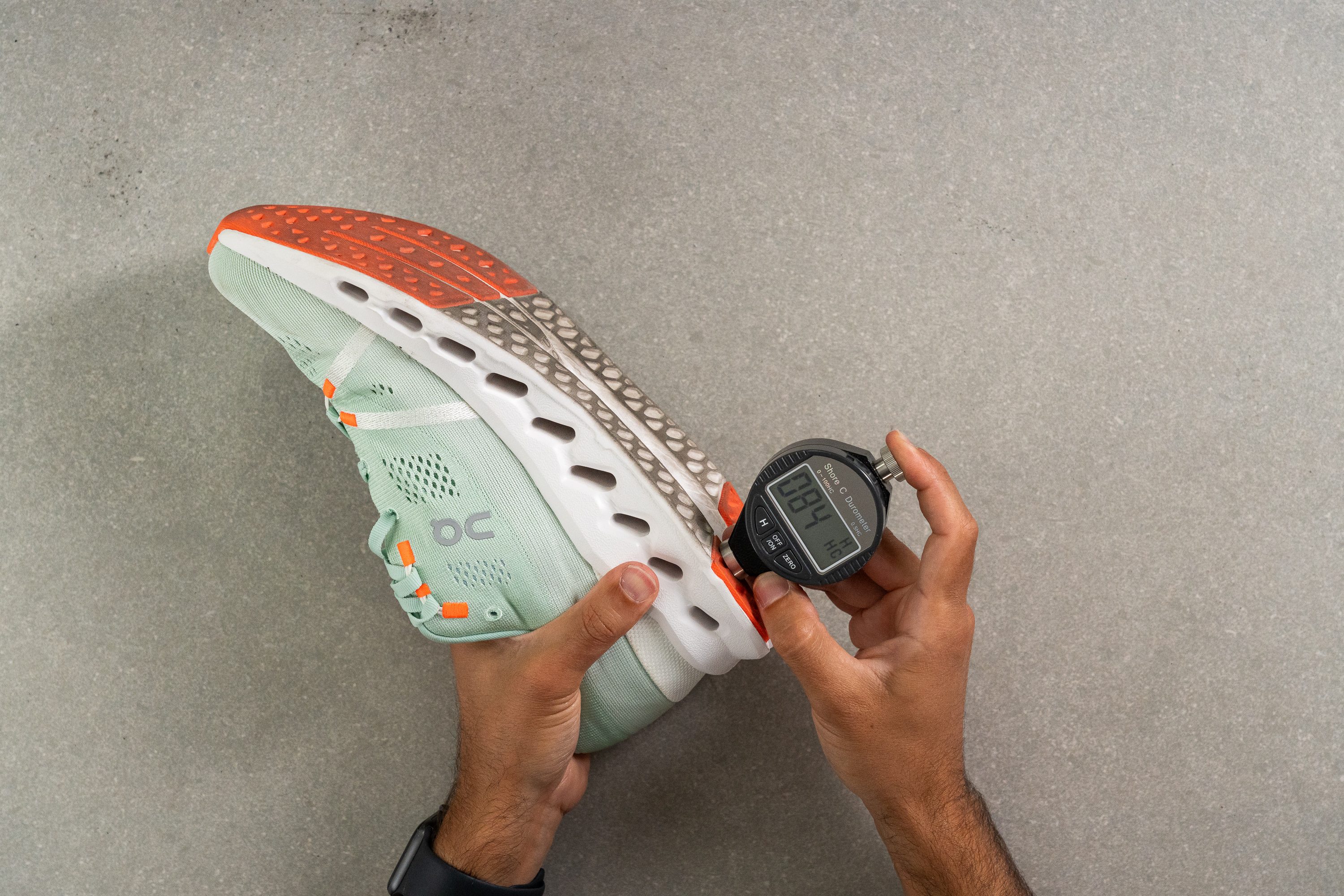
| Cloudsurfer 7 | 83.3 HC |
| Average | 79.2 HC |
Outsole durability
To test the durability of the outsole we subjected the Cloudsurfer 7 to another bout against our relentless dremel. After withstanding twenty seconds of 3.2N of force spinning at 10K RPM, the Cloudsurfer 7 only lost 0.95 mm of rubber from the outsole. This makes the shoe more durable than our lab average, and means that there should be more than enough rubber left over after 400 miles of use.
The only question mark regarding the shoe’s durability comes from the incomplete rubber coverage on the outsole. There’s quite a fair amount of exposed foam at the midfoot which on the one hand serves to shed some weight off the shoe, but on the other risks the integrity of the soft midsole over time.
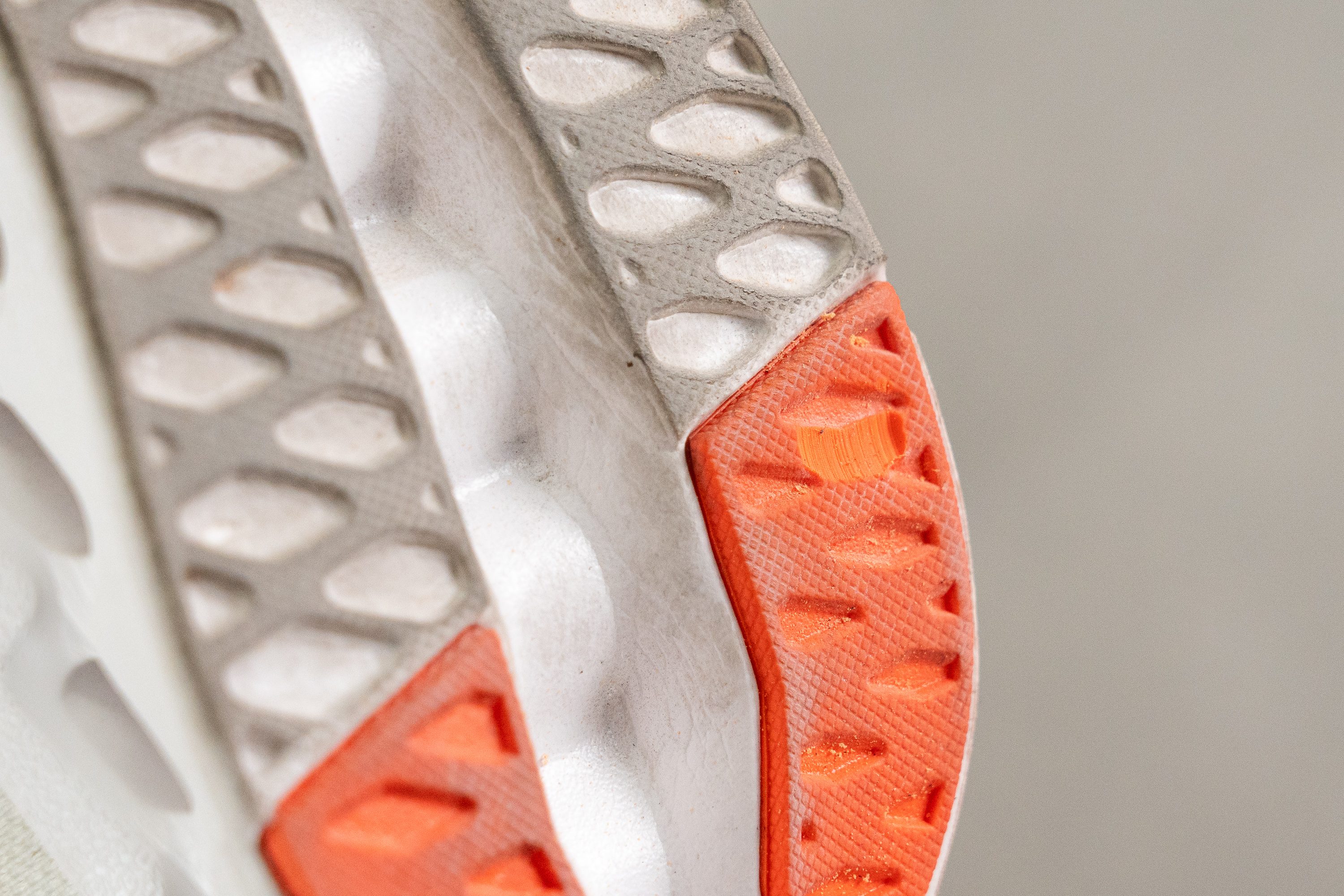
| Cloudsurfer 7 | 0.9 mm |
| Average | 1.1 mm |
Outsole thickness
We measured the Cloudsurfer 7’s outsole to be 3.0 mm thick, which is just a hair shy of our current lab average. The result of our previous test, however, shows that this isn’t an issue as we still had 2.05 mm or rubber left after simulating extreme wear and tear.
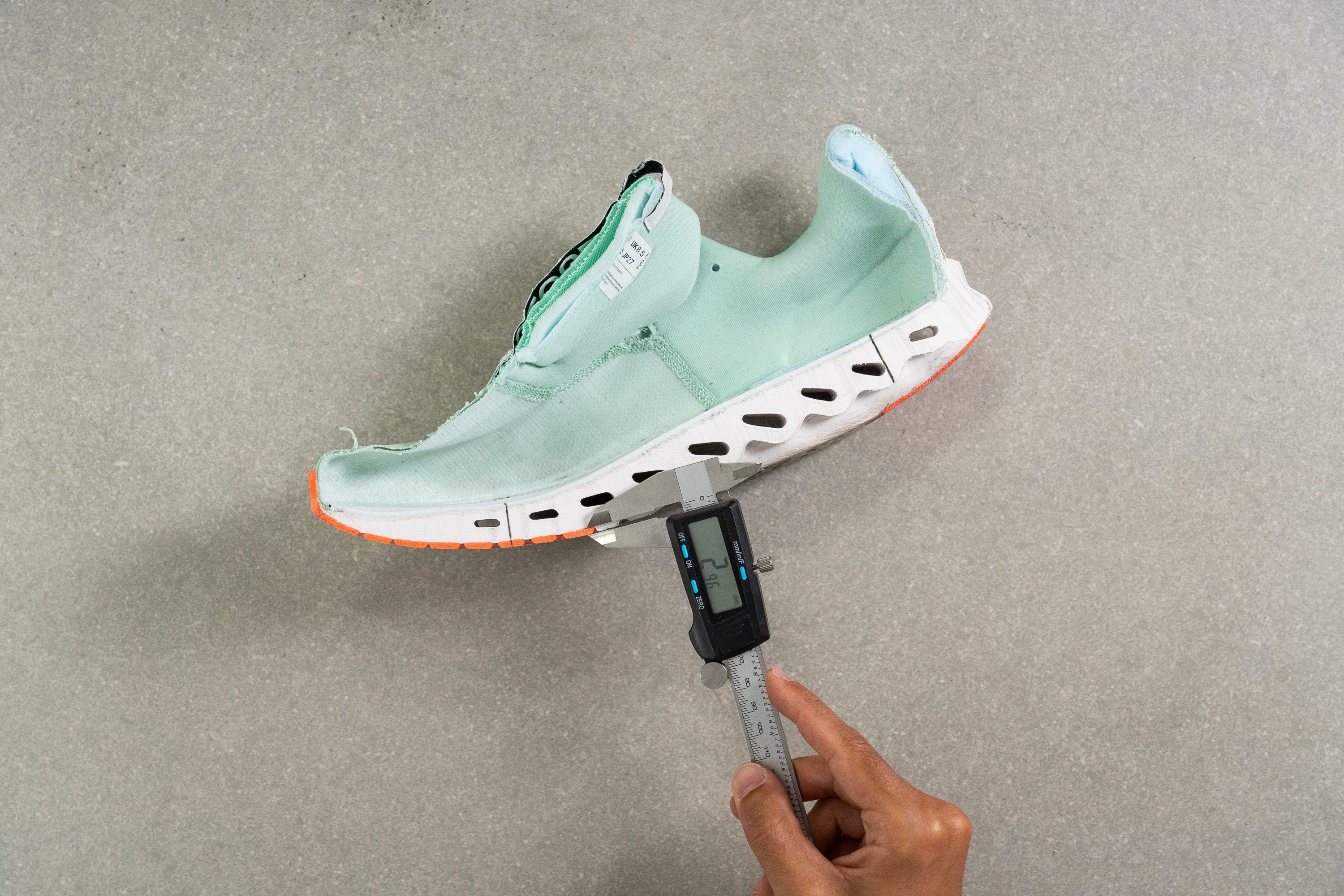
| Cloudsurfer 7 | 3.0 mm |
| Average | 3.2 mm |
Misc
Insole thickness
Measuring 4.0 mm according to our caliper, the insole of the Cloudsurfer 7 is a hair shy of our lab average, but still provided us with a soft surface to land on that complements the softness of the midsole.
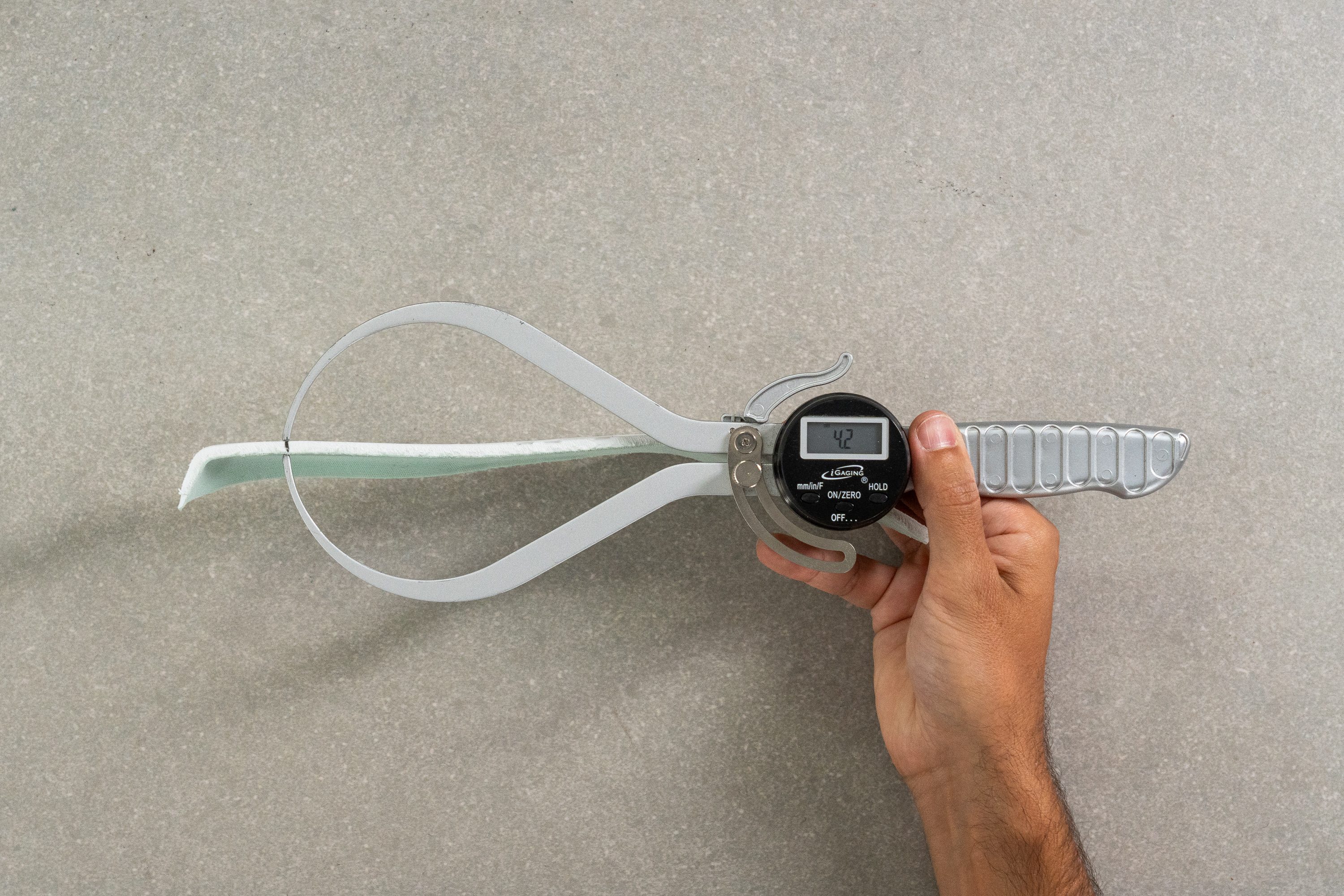
| Cloudsurfer 7 | 4.2 mm |
| Average | 4.5 mm |
Removable insole
The insole of the Cloudsurfer 7 is removable and can be replaced with custom orthotics if necessary.
| Cloudsurfer 7 | Yes |
Midsole softness in cold (%)
After leaving it in the freezer for 20 minutes to simulate exposure to cold weather condition, we re-tested the softness of the Cloudsurfer 7’s midsole and got a durometer reading of 30.9 HA, This makes the shoe fall in line with the average midsole stiffness of shoes under the same conditions.
While this is quite a bit firmer than the room temperature reading, the Cloudsurfer 7 will still provide a balanced level of cushioning underfoot and won’t feel like running on ice blocks.
With a 51.5% differential between warm and cold, the Cloudsurfer 7 is demonstrably less consistent than the average road shoe in the cold. This means that there will definitely be a notable decrease in plushness during winter runs
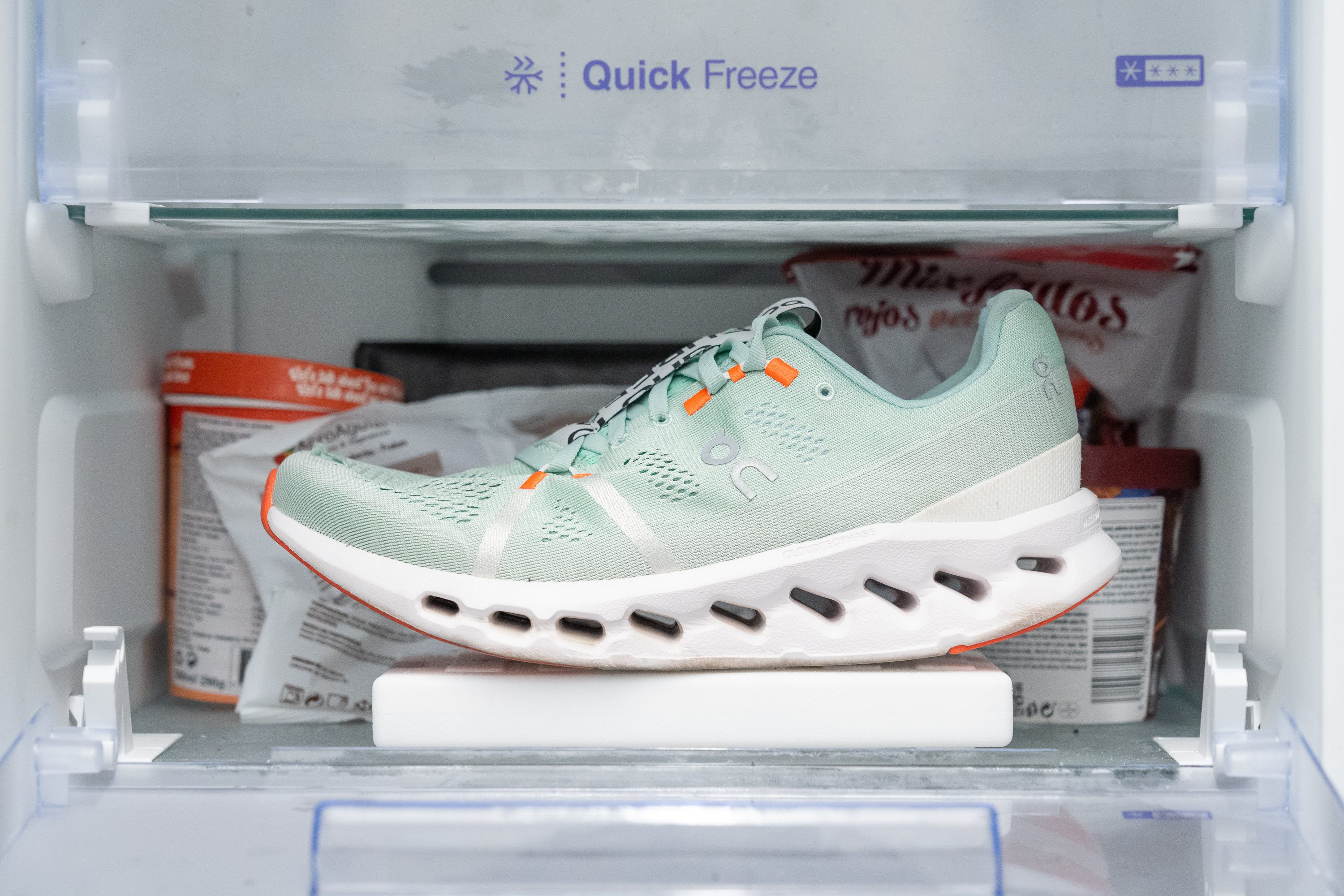
| Cloudsurfer 7 | 52% |
| Average | 24% |
Reflective elements
The On logos on the rear and outer side of the Cloudsurfer 7 reflect light in a chic and minimal manner. However, the key word in that sentence really is minimal as it doesn’t do very much for night time visibility.
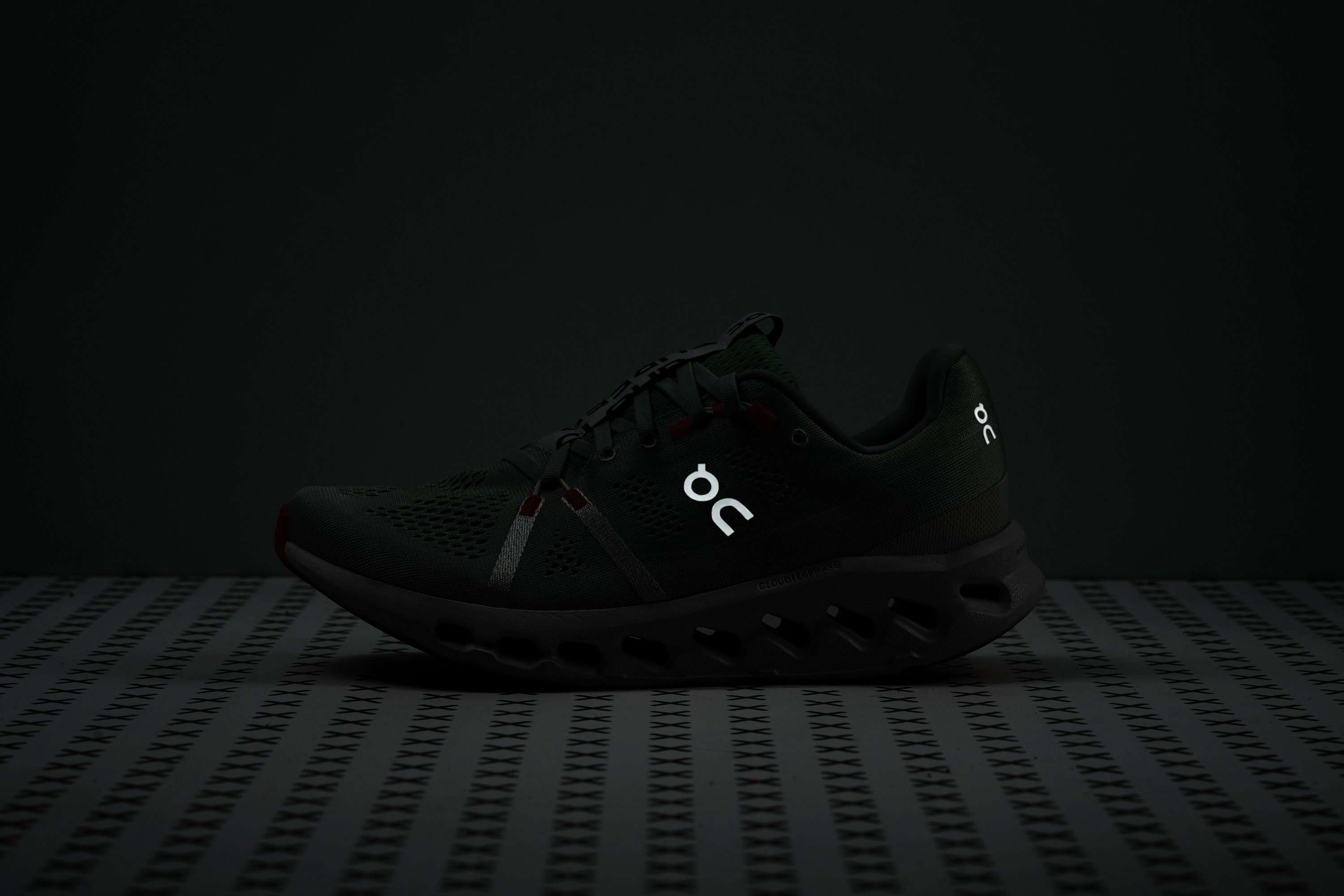
| Cloudsurfer 7 | Yes |
Tongue padding
As alluded to in the previous section, the Cloudsurfer 7 boasts an incredibly thick tongue; 10.1 mm to be exact according to our caliper measurements. This makes it much more generously padded than the average shoe and afforded us almost unreasonable levels of comfort around the instep, Lace bite is also nothing but a distant and unpleasant memory in the Cloudsurfer 7.
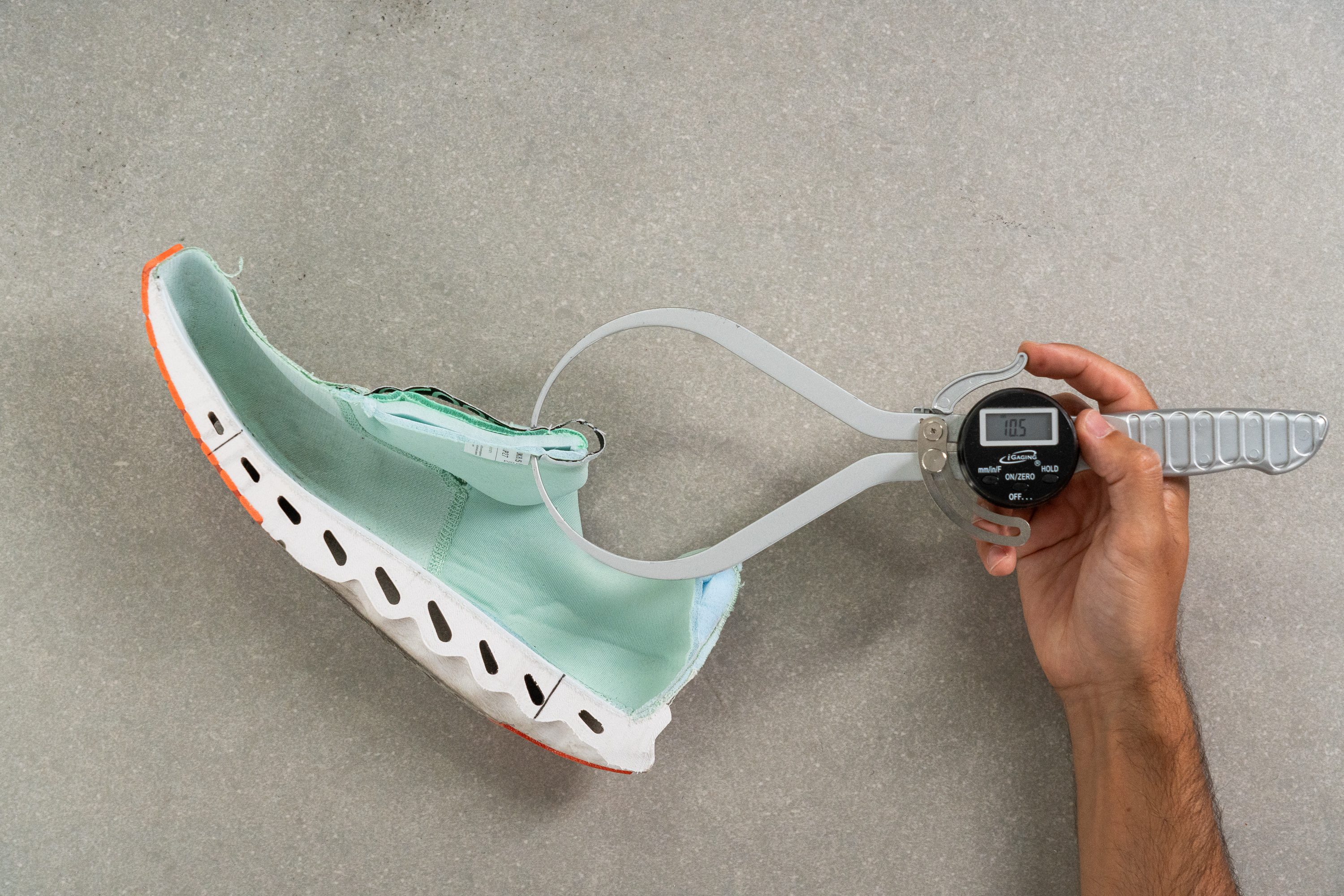
| Cloudsurfer 7 | 10.5 mm |
| Average | 5.8 mm |
Tongue: gusset type
The Cloudsurfer 7’s tongue is semi-gusseted on both sides. This combined with how luxuriously padded tongue is means that we had no issues with slippage during our test runs.
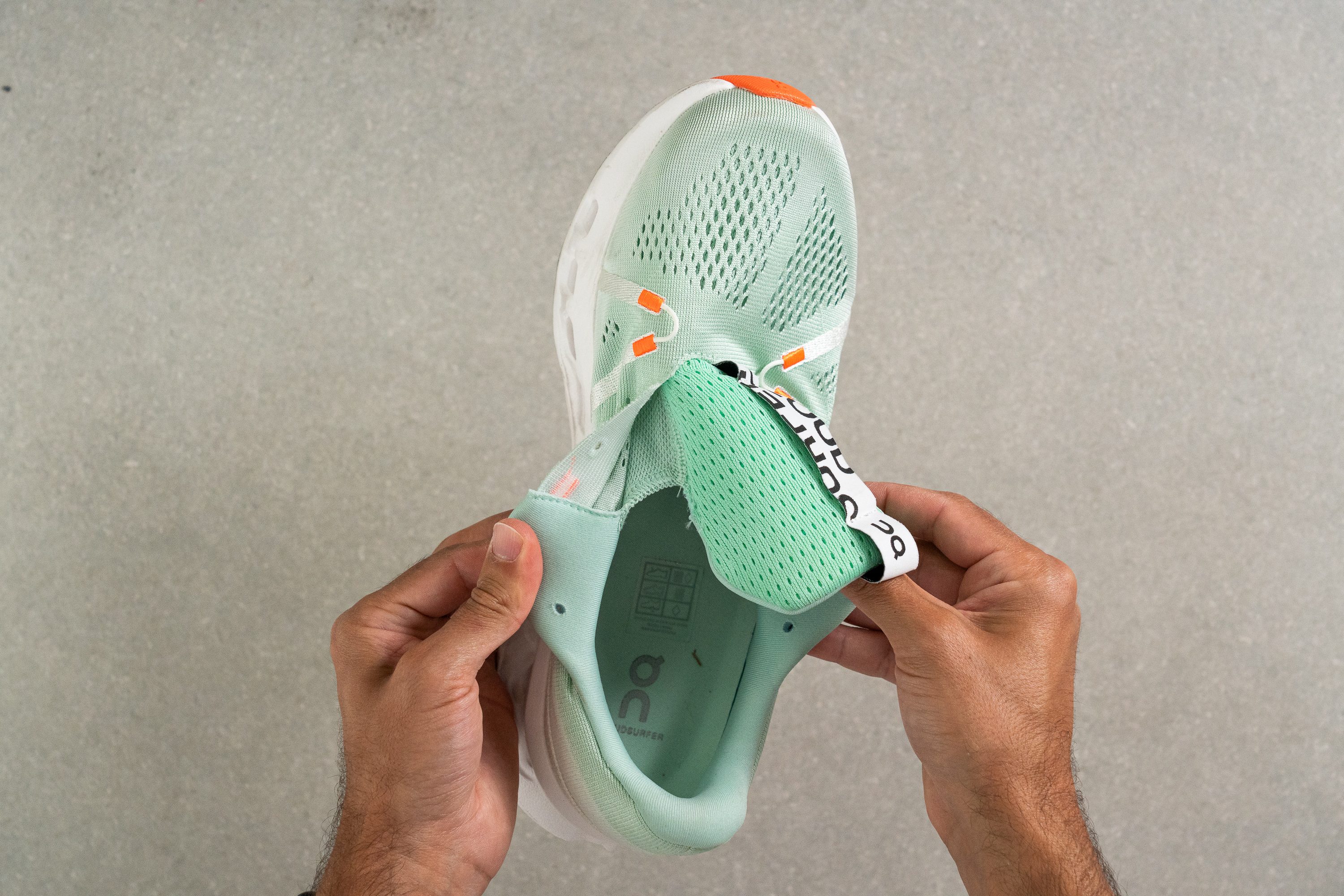
| Cloudsurfer 7 | Both sides (semi) |

